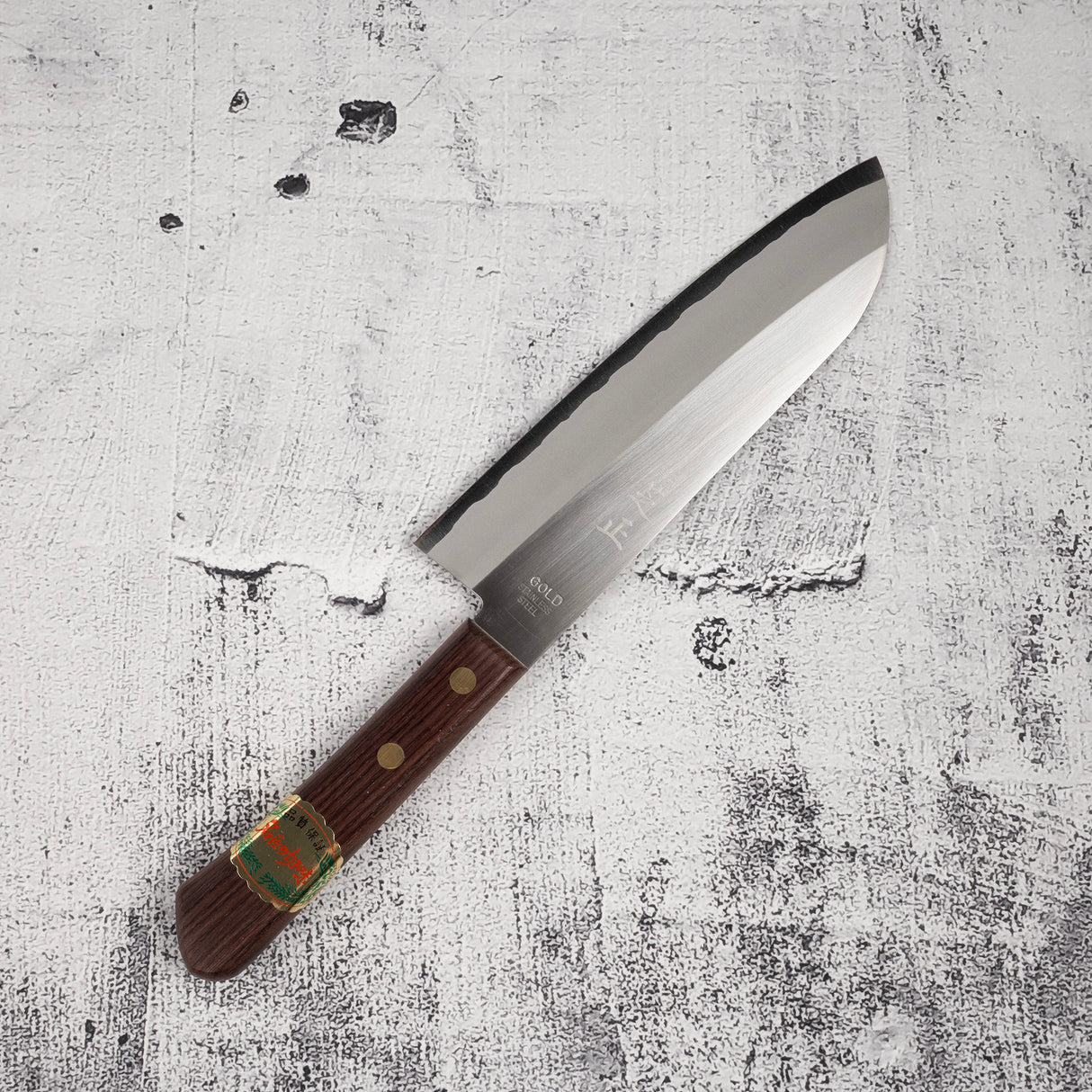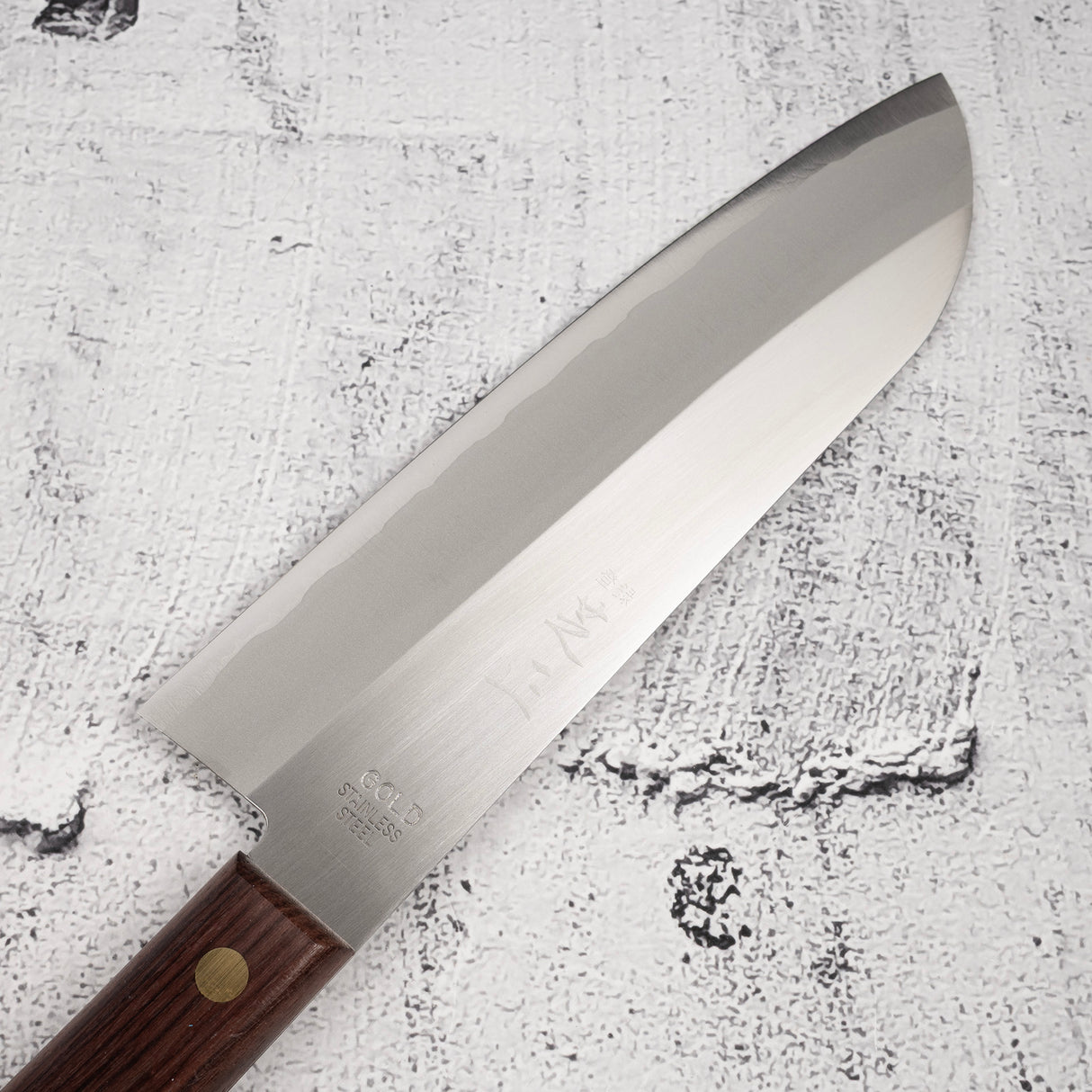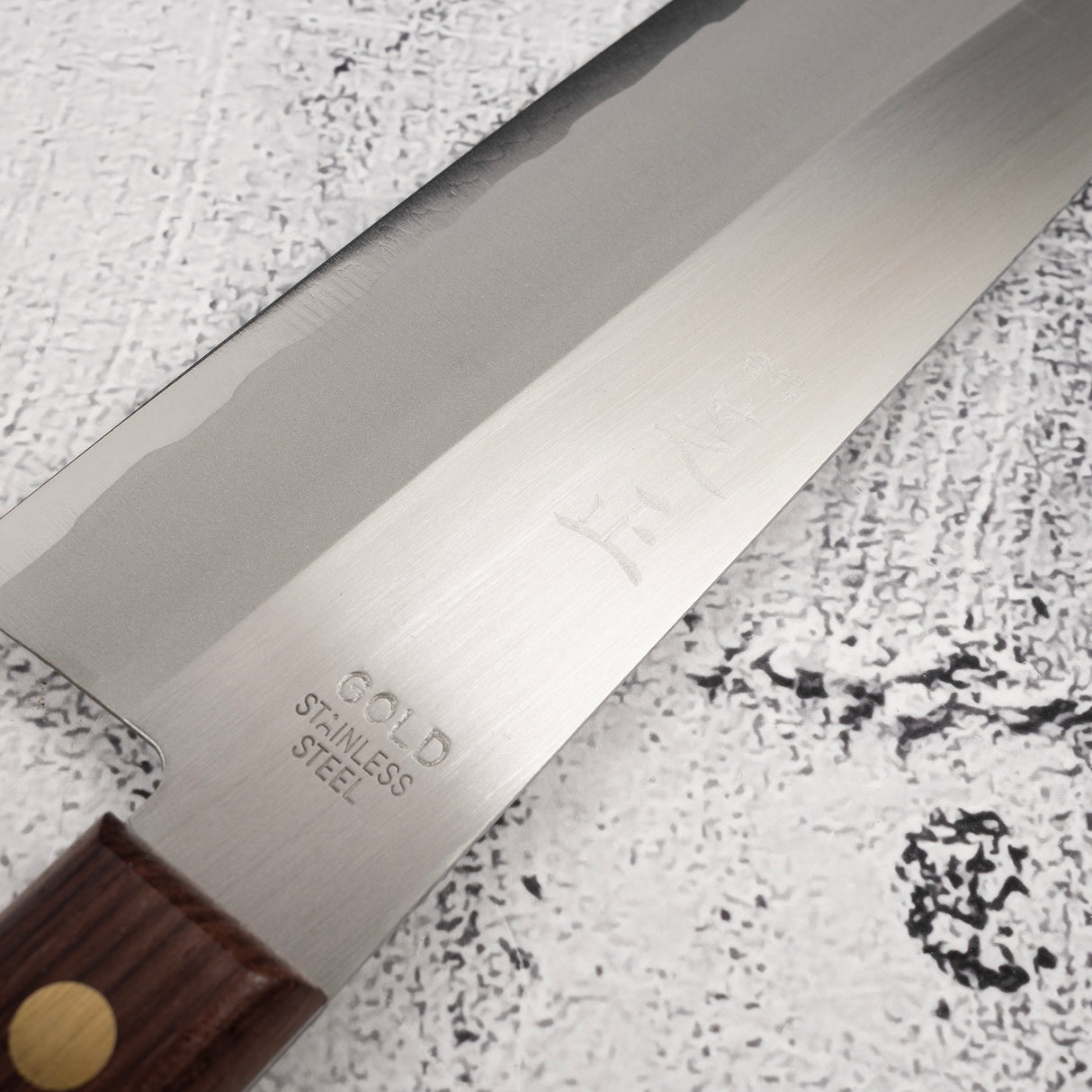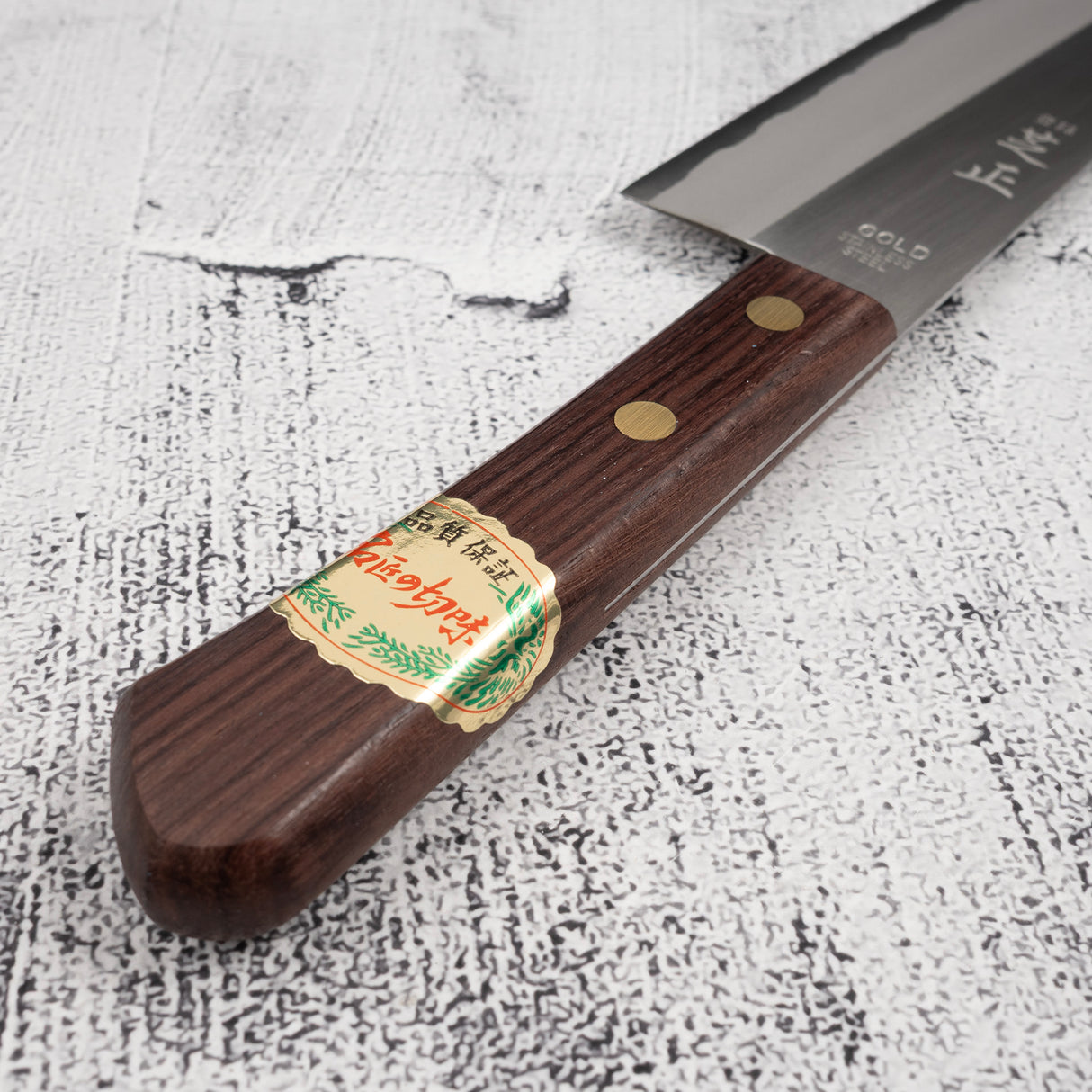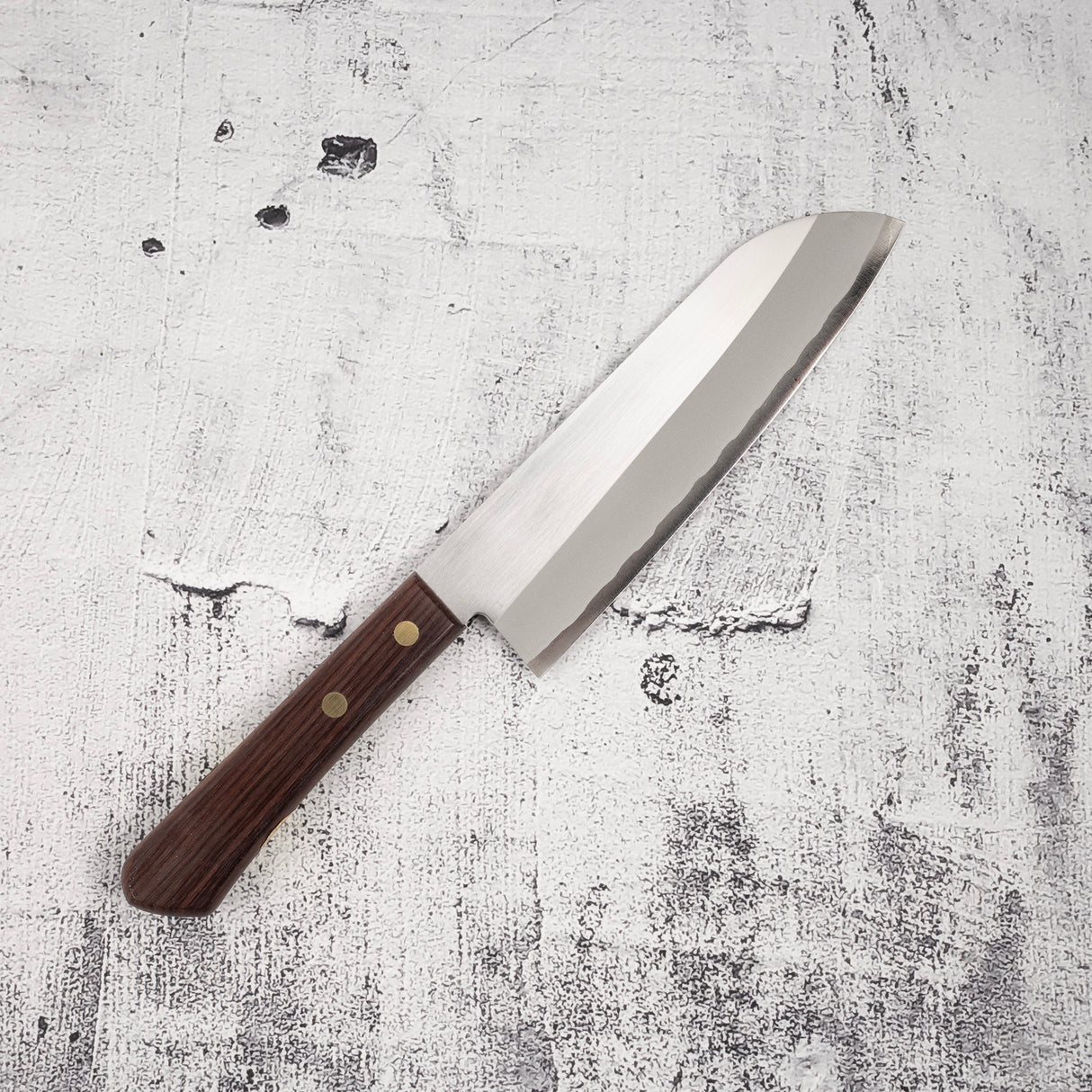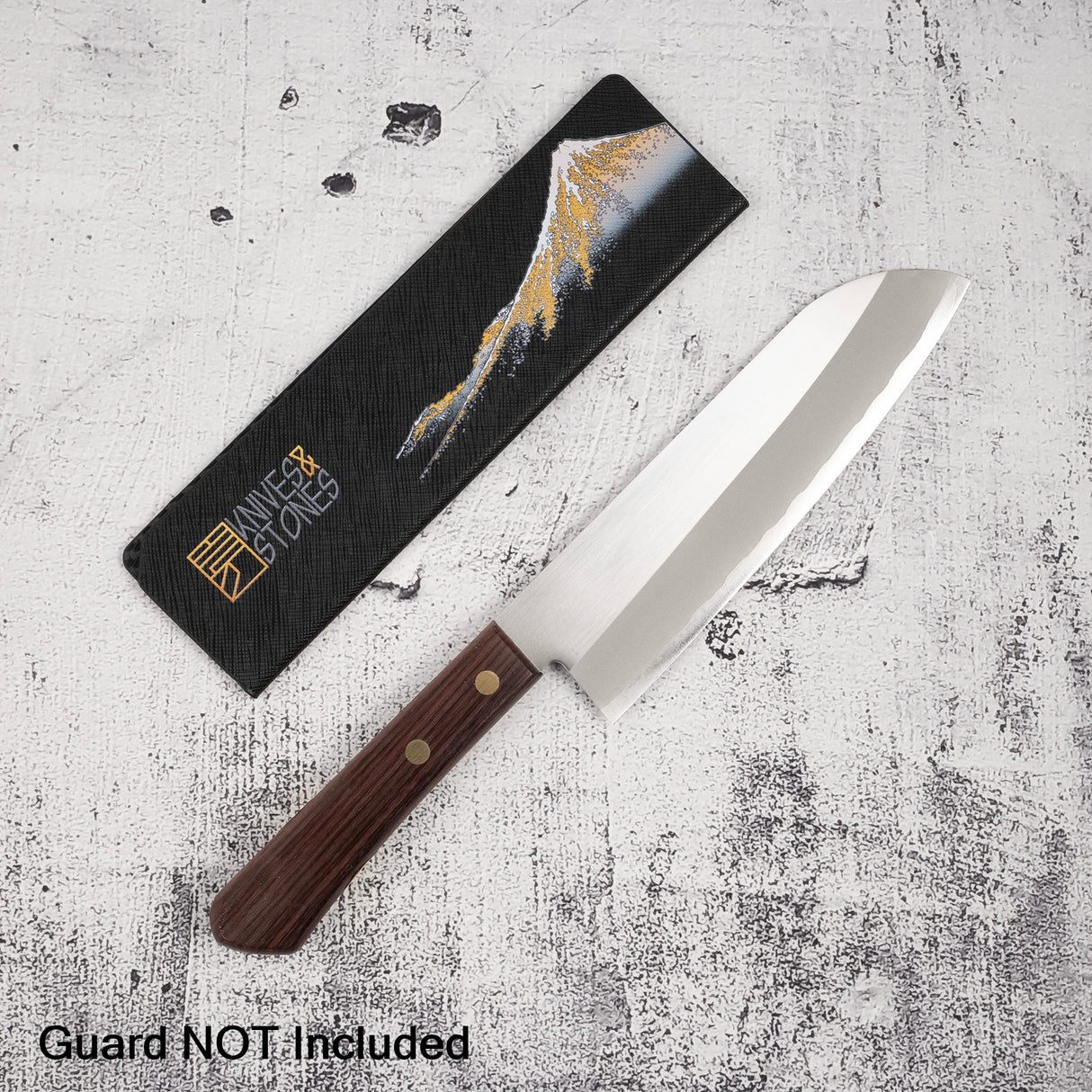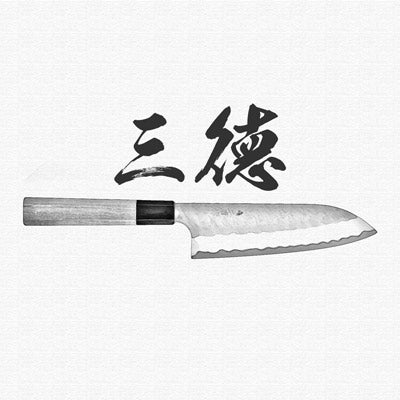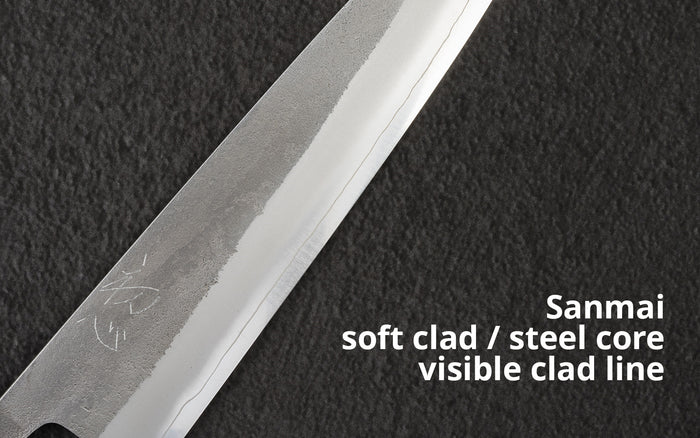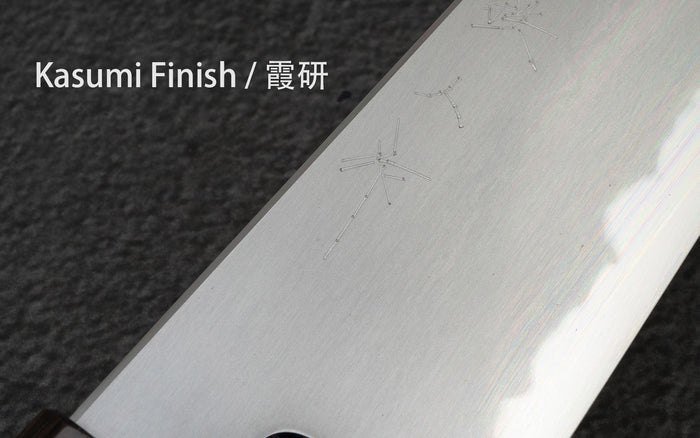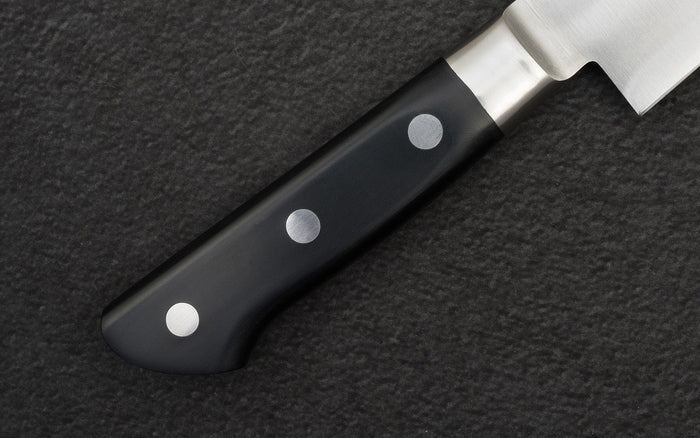Shibata | SKU:
SBMS_V5_SA170
Shibamasa VG5 Santoku 170mm
Regular price
$1,996.00
Unit price
/
Unavailable
Shibamasa VG5 Santoku 170mm is backordered and will ship as soon as it is back in stock.
Couldn't load pickup availability
Detailed Specifications
| Line | Shibamasa VG5 |
| Profile | Santoku |
| Bevel Type | Double Bevel |
| Weight | 98 g | 3.5 oz |
| Edge Length | 173 mm | 6 13/16″ |
| Heel Height | 47 mm | 1 27/32″ |
| Width @ Spine | 1.4 mm | 1/16″ |
| Width @ Mid | 1.4 mm | 1/16″ |
| Width @ 1cm from Tip | 1.3 mm | 3/64″ |
| Steel | VG5 | Stainless |
| Blade Construction | Sanmai - Stainless Clad |
| Hardness (HRC) | 58 - 59 |
| Surface Finish | Kasumi |
| Handle | Western Pakka Wood with Bolster |
| Region | Other |
| Best for |
|

| Pros | Cons |
|
|
|
Care Instruction
- Don't cut hard things! Japanese knives are brittle so bone hacking is a NO NO!
- Wash with neutral detergent after use, and wipe dry;
- Please don't wash knife with dishwasher, it will damage the wood handle;
- Be careful not to leave the knife close to a heat source for a long time;
- It is a lot more dangerous to cut with a blunt knife than a sharp knife!
- It is best to sharpen a Japanese knife regularly on a waterstone.

